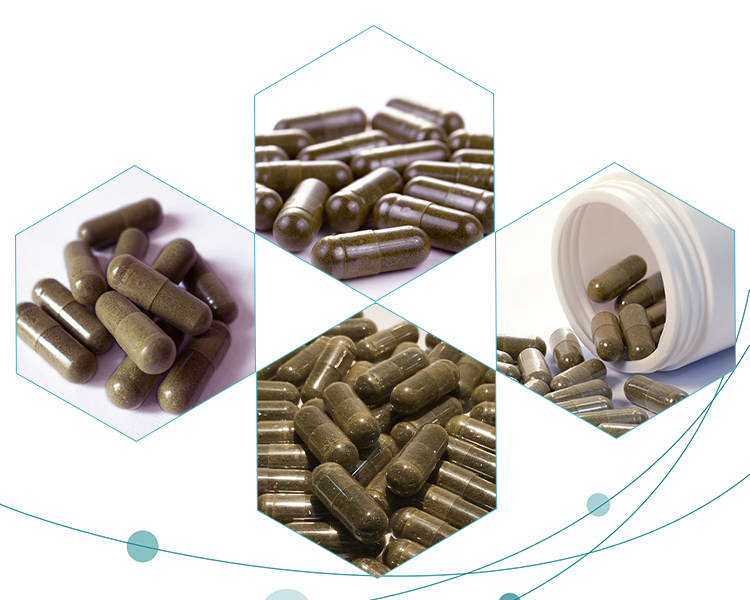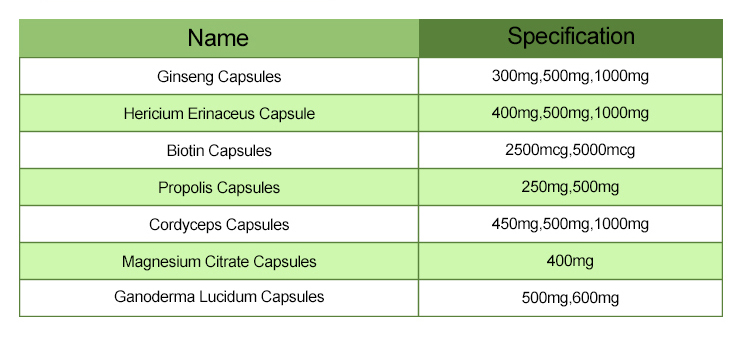Cordyceps capsules typically contain powdered or extracted forms of Cordyceps sinensis or Cordyceps militaris, which are species of parasitic fungi traditionally used in Chinese medicine for various health benefits. Cordyceps is believed to have adaptogenic, immunomodulatory, and antioxidant properties, among others.
Here’s a general outline of the materials and methods involved in the production of Cordyceps capsules:
Materials of Cordyceps Capsules:
1.Cordyceps Fungi: The primary material used in Cordyceps capsules is the Cordyceps fungus itself. This can be sourced from natural habitats or cultivated in controlled environments.
2.Growing Medium: If cultivating Cordyceps, a suitable growing medium is needed. This could be a substrate such as rice, grains, or a synthetic medium containing nutrients necessary for fungal growth.
3.Equipment for Extraction (if applicable): If producing extract forms of Cordyceps, equipment such as extractors, filters, and centrifuges may be required.
4.Capsule Shells: Empty capsule shells, usually made from gelatin or vegetarian alternatives such as cellulose, are needed to encapsulate the Cordyceps powder or extract.

5.Excipients (optional): Excipients like stabilizers, flow agents, or fillers may be added to improve the handling and stability of the Cordyceps powder or extract.
6.Packaging Materials: Materials for packaging the finished capsules, including bottles or blister packs, labels, and seals.
Methods of Cordyceps Capsules:
1.Cultivation or Sourcing: Cordyceps can be cultivated in controlled environments using suitable substrates and conditions, or sourced from natural habitats where the fungi grow. Cultivation typically involves inoculating the growing medium with Cordyceps spores or mycelium and providing appropriate temperature, humidity, and other environmental conditions for growth.
2.Harvesting: Once the Cordyceps have matured, they are harvested from the growing medium. In natural settings, this may involve careful collection from the host organism (often caterpillars in the case of Cordyceps sinensis). In cultivation, the entire substrate or specific parts containing the Cordyceps are harvested.
3.Processing: The harvested Cordyceps may undergo processing steps such as drying, grinding, or extraction to obtain the desired form (powder, extract, etc.) suitable for encapsulation.
4.Formulation: The Cordyceps powder or extract is then formulated into capsules. This may involve blending with excipients for better flow properties or stability, depending on the desired characteristics of the final product.
5.Encapsulation: The formulated Cordyceps material is encapsulated into empty capsule shells using encapsulation machines. This process ensures accurate dosing and uniformity of the final product.

6.Packaging and Labeling: The filled capsules are then packaged into bottles or blister packs and labeled with necessary information such as dosage instructions, ingredients, and manufacturing details.
7.Quality Control: Throughout the manufacturing process, quality control measures are implemented to ensure the purity, potency, and safety of the Cordyceps capsules. This may include testing for contaminants, active ingredients, and other quality parameters.
8.Storage and Distribution: The finished Cordyceps capsules are stored under appropriate conditions to maintain their quality and potency before distribution to consumers.
It’s important to note that specific methods and materials may vary depending on the manufacturer and the formulation of the Cordyceps capsules. Additionally, regulatory requirements regarding the manufacturing and labeling of dietary supplements may apply in different regions.
